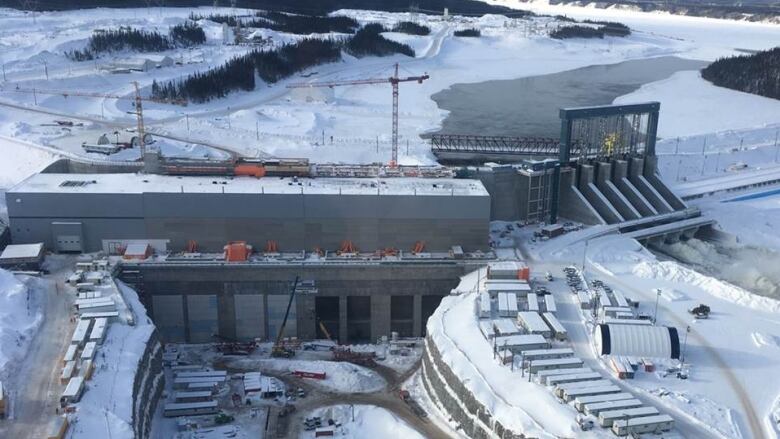Contested Muskrat Falls methylmercury recommendation could cost $742M
Environment minister says government reviewing report from committee established after hunger strikes

One of several new Muskrat Falls recommendations has given the Newfoundland and Labradorgovernment a tough choice.
The government can removesoil from the project's reservoirto help keep methylmercury levels down at a potential cost of three-quarters of a billion dollars or it can ignore the recommendation of a committeeestablished as a result of hunger strikes and a site occupation.
Environment Minister Eddie Joyce said Wednesday heisn't committing to anything, as the government received the report by anIndependent Expert Advisory Committee only a day earlier.
Recommendation not unanimous
"Right now, we're reviewing the report as a whole. There's a lot of scientific information in the report," he said at Confederation Building on Wednesday morning.
The recommendation to removeat least 50 centimetres of topsoil from an area of the reservoir where vegetation has already been removed and capping the wetlands with 50 centimetres of low organic soil was not unanimously accepted by the committee, Joyce said.

Three of the committee's voting members theNunatsiavutgovernment, theNunatuKavutcommunity council and a representative of affected municipalities voted in favour, while the fourth, theInnuNation, voted against it. The Innuapprove of the wetlands capping, but not the soil removal.
According to estimates from SNC-Lavalin, the cost to remove the soil would be anywhere from $409 million to $742 million on top of a project that is alreadybillions over budget.
"It is a high cost, but that's something you'd have to askNalcorabout," Joycesaid. "What we're looking at is the report itself. My job is to look at the report."
He also noted the information in the report isn't a surprise, as the provincial government had a non-voting position on the committee. His next move will be to meet with committee chair Kenneth Reimer.
Muskrat Falls on Innu land
"It's very preliminary to say what the government's position is on it, but what I will say is we will do our due diligence on it," he said. "We will meet with Dr. Reimer and then we will meet with the groups after that."
Reimer told CBCit's true as has been noted by the Innu that soil mitigation on this scale hasn't been done before and would be a risky experiment.
"I certainly respect their opinion, because if so it would have to be transported to other Innu lands, and they would have to be comfortable of the engineering of that exercise, so I certainly respect that," he said.
"The three other voting members of the committee, however, did feel the decrease in methylmercury was worth it."
Reimer said he hopes the government will accept the soil removal recommendation.
"I do think the package of recommendations certainly fulfils the mandate that we were given, which is to protect the health of the people that might be influenced by the Muskrat Falls project."
Joyce said the Muskrat Falls project lies within the Innu Nation's land claim, so the minority view has to be considered.
"With no consensus, you just can't dismiss the one who happens to be the owner of the land that's going to be affected," he said.
"They feel that there may be some issues that they have, and that's what we've got to try to work through."
Three other recommendations from the committee were unanimous:
- A public information campaign touting the safety of water and food in the area.
- A monitoring program for the projectdesigned by an independent body.
- An "impact security fund" that will guarantee access to local food ifmethylmercurylevels rise above pre-established thresholds.
With files from Labrador Morning.












_(720p).jpg)


 OFFICIAL HD MUSIC VIDEO.jpg)
.jpg)



























































































